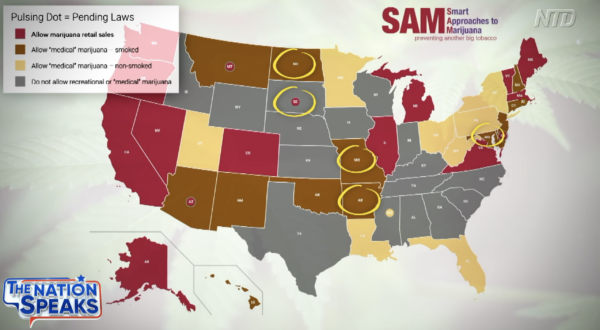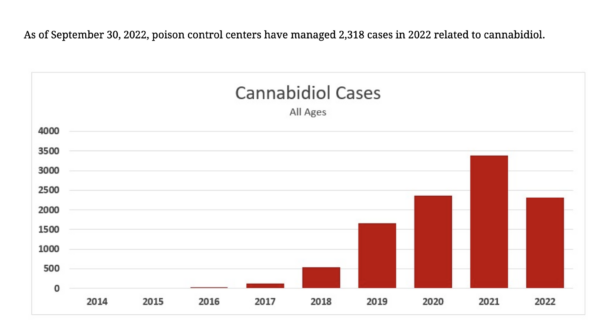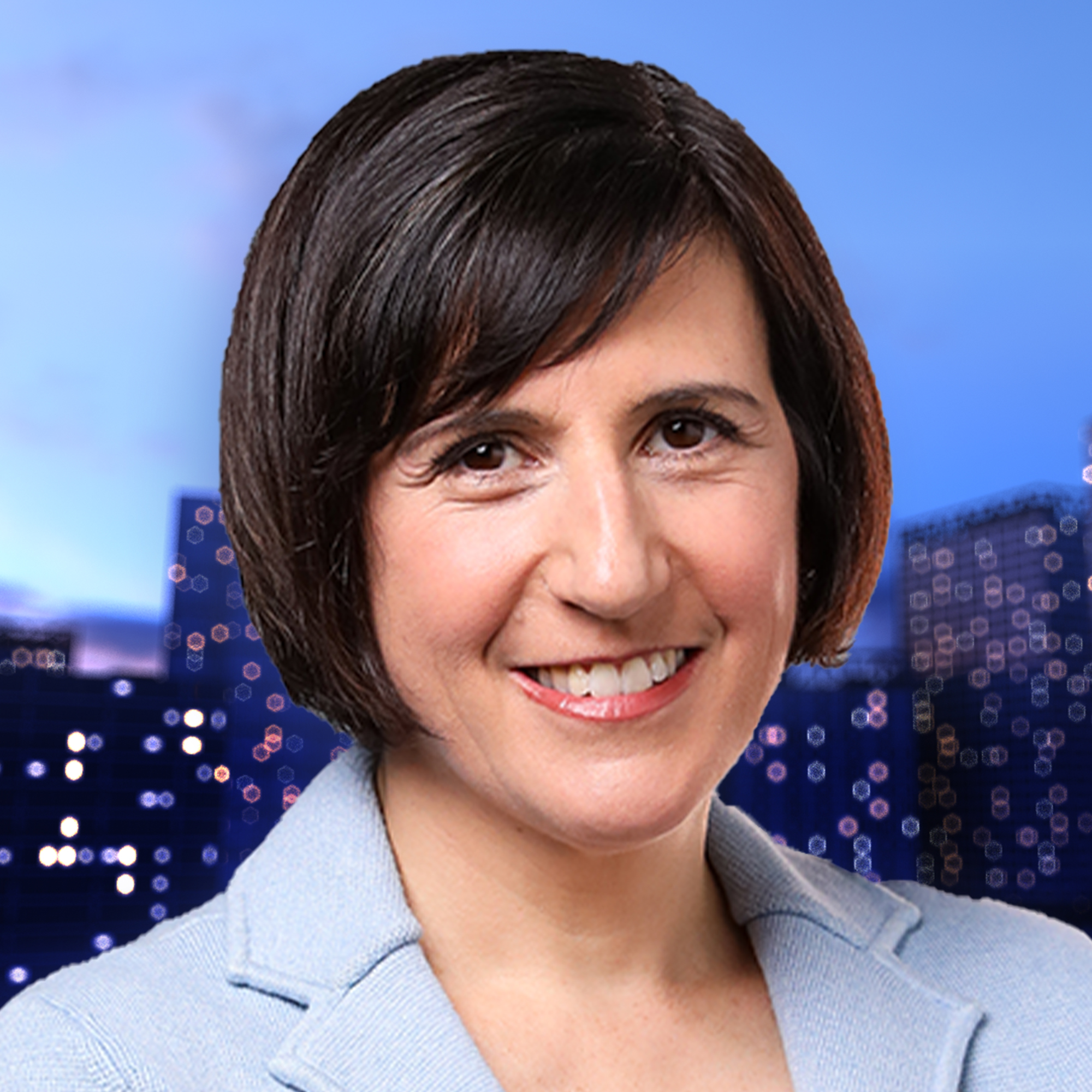As drug legalization groups and the cannabis industry lobby to legalize cannabis across the United States, with initiatives to legalize marijuana on the November ballot in five more states, many experts warn this will only increase the physical and mental harm from the unregulated, high-potency cannabis.
President of the American Board of Pain Medicine and a vice president of the International Academy on the Science and Impacts of Cannabis, Dr. Ken Finn, said high potency cannabis use is being linked to poisonings in young children, as well as psychosis and schizophrenia in an increasing number of regular users.
“A lot of my colleagues that work in psychiatry and emergency medicine are seeing a sharp rise in marijuana-related psychosis,” Finn told NTD’s The Nation Speaks in an Oct. 1 interview.
Data from Europe ties these mental health problems to high levels of the THC chemical in cannabis that causes people to feel high, Finn said.
“The European data shows that there’s a fivefold increase risk of first-episode psychosis with what they described as high potency THC, which generally is about 10%. So we are really in uncharted waters here [in Colorado, with THC potencies of between 40 to 60 percent], with all these states going down this pathway.”

“The NIH came out with a paper last week showing that kids that are exposed [to cannabis] in utero tend to have psychotic-like episodes by the time they’re 10 years of age,” Finn warned.
Supercharged
Ben Cort, author of “Weed, Inc.: The Truth About the Pot Lobby, THC, and the Commercial Marijuana Industry,” said the reason that cannabis products are increasing their THC content is to offset the tolerance threshold existing users have developed to the compound.
“The more problems the user [has], the higher the concentration they have to consume, and the more frequently they have to consume, just to come back to that dopamine baseline,” Cort told The Nation Speaks.
“It’s just inevitable that in a commercialized market that depends on problem use, you will end up with these 99.9% pure THC products.”
“They’ve so supercharged it [cannabis products] and changed fundamentally what it is, it’s become a really significant issue,” he said.
While cannabis-induced psychosis won’t affect most people after they halt their use, for some, it can persist for weeks or months before things return to normal, Finn said. “So this is potentially a very dangerous product, particularly if there’s a young person that is exposed.”
There just aren’t enough placements available for the mental health care needed, he said.
“And in a very rare circumstance, sometimes [the psychosis] doesn’t reverse at all,” he added. “There’s a very strong correlation to cannabis use of high potency with schizophrenia, although it the link of a causal effect has not clearly been proven but it’s strongly suspected.”

Growing Problem Users
Monitoring the Future’s panel study found that marijuana use by young adults 19- to 30-years-old increased significantly in 2021 compared to previous years, which Cort said shows a “lower perception of risk” in the community although the actual risk has gone up.
“The lower the perception of risk for any substance, the higher the use rate will be,” he said.
“Any sort of industry that has addictive potential is absolutely dependent on the ‘problem user,’” Cort said. Just like in the alcohol industry, where roughly 20 percent of consumers drink 80 percent of the alcohol, seven percent of the consumers who buy cannabis represent 76 percent of sales, he added.
According to a study from Columbia University Mailman School of Public Health and NYU School of Medicine, states in which recreational marijuana use is legal have seen a 26 percent increase in use among young adults as well as an increase in problem users.
An Unregulated Industry
“Poison control calls are skyrocketing across the country in states that have both medical and recreational [cannabis] programs, particularly in the zero to five age group,” Finn said.
Finn is concerned that because the industry has circumvented the FDA drug development process, many of the products available tend to be contaminated with fungicides, anticoagulants, rodenticides, heavy metals, and sometimes mislabeled.
In addition, many cannabis products labeled to contain CBD—a secondary chemical in cannabis that does help with relaxation but does not elicit euphoric states—actually contain THC, Finn warned.
Children will accidentally get a hold of edible cannabis products that often look like candy but because they are unregulated, is of super high THC potency, Cort said.
A factor that contributes to children ending up in hospital is that edibles are sold by weight, not potency.

Profit
“Multinational corporate interests,” which care a lot about profit, are behind the cannabis industry, Cort said. “The idea here is absolutely not social justice, nor any sort of reform in a meaningful way. The intent here is to get richer.”
Many of the organizations that advocate for legalizing marijuana and other drugs say it would promote social and racial justice because it would prevent black and brown people from going to jail for drug offenses, and instead help them access treatment for their addiction. They claim that legalizing marijuana would also create jobs, save on health costs, and make the products safer than what would otherwise become a black market.
The marijuana industry has little to no regulation and is similar to how the tobacco industry used to be before the public was made aware of the health risks and some guardrails were put in place, Cort said.
“The only thing that changed, both the opiate world with the pharmaceutical companies and the tobacco companies, was tort,” he said. “It really is going to take massive lawsuits to change any of this because these people making money hand over fist are absolutely not going to change it on their own accord.”


